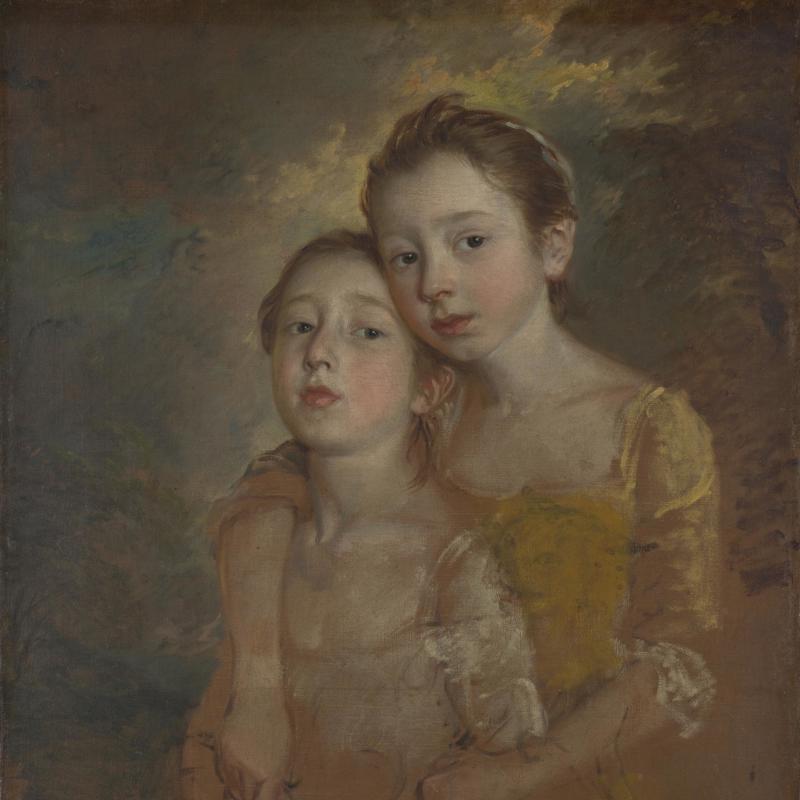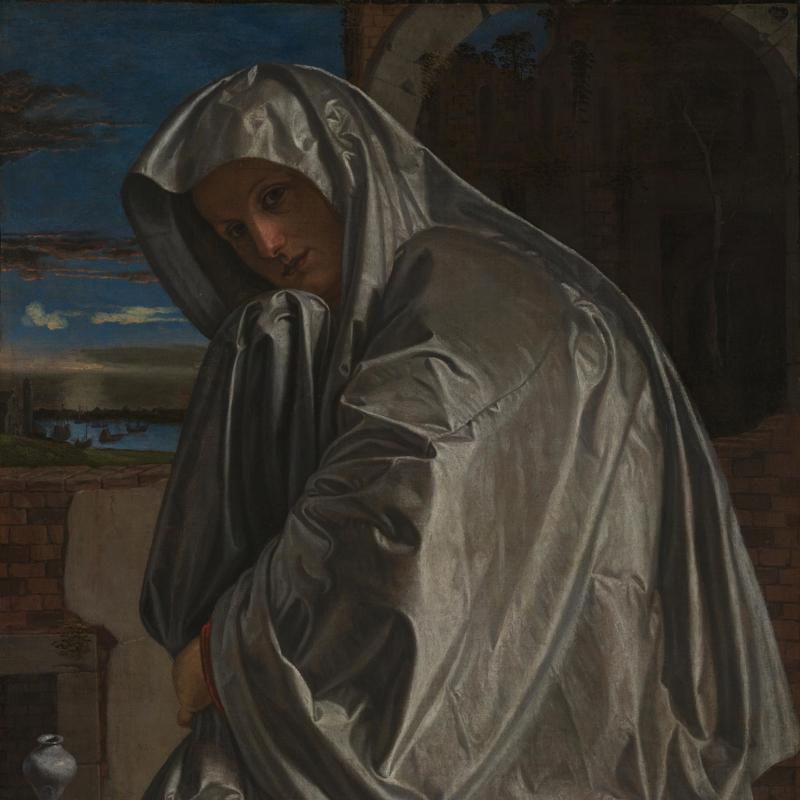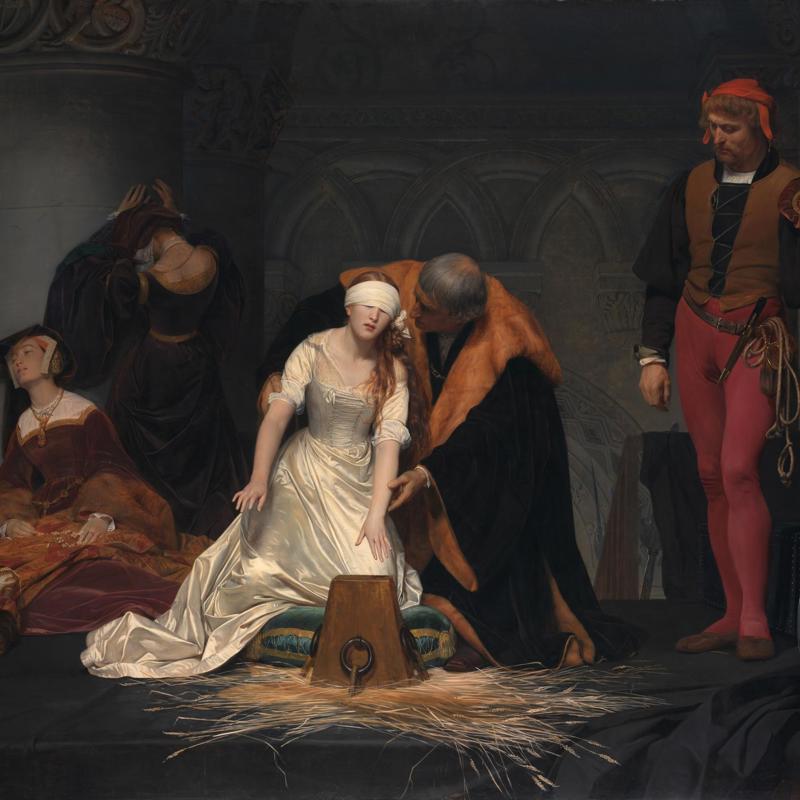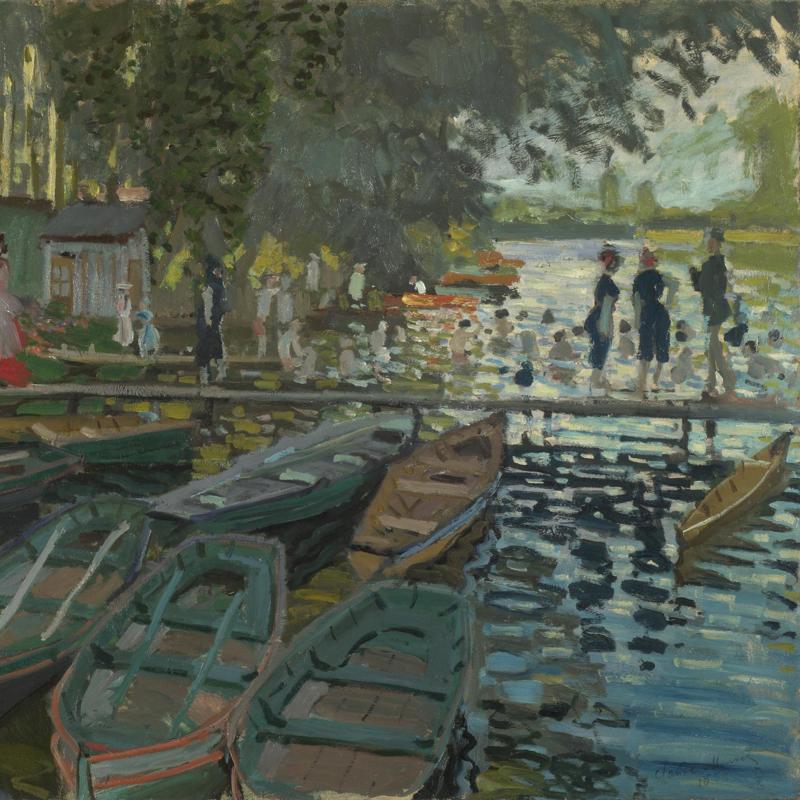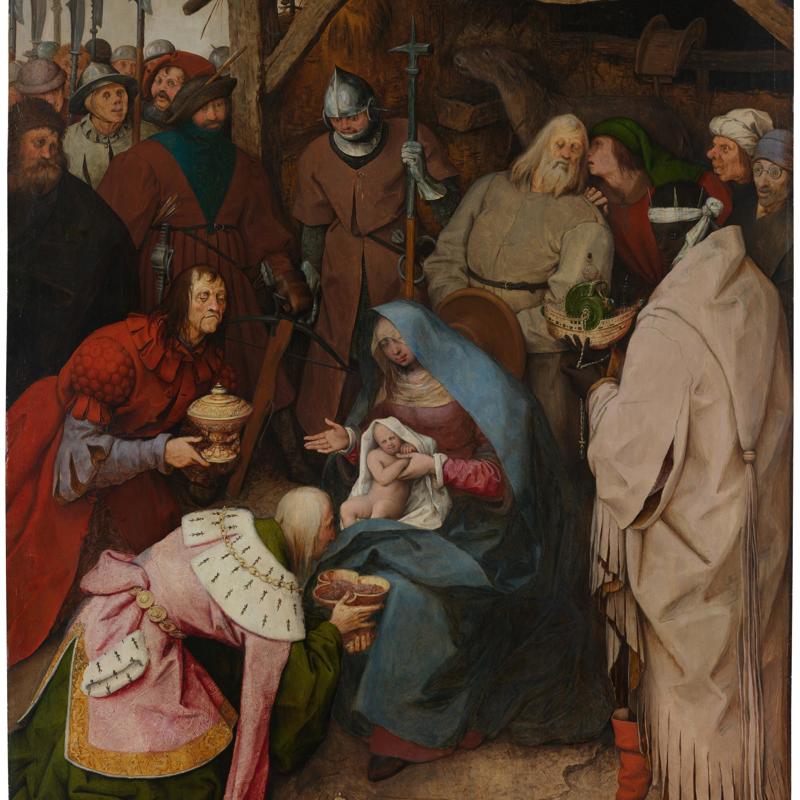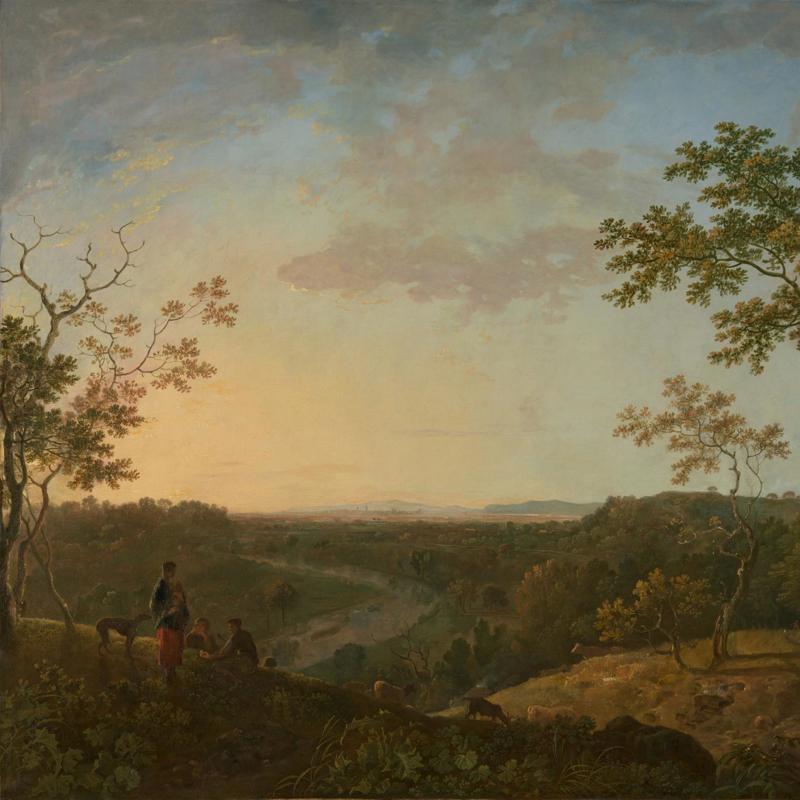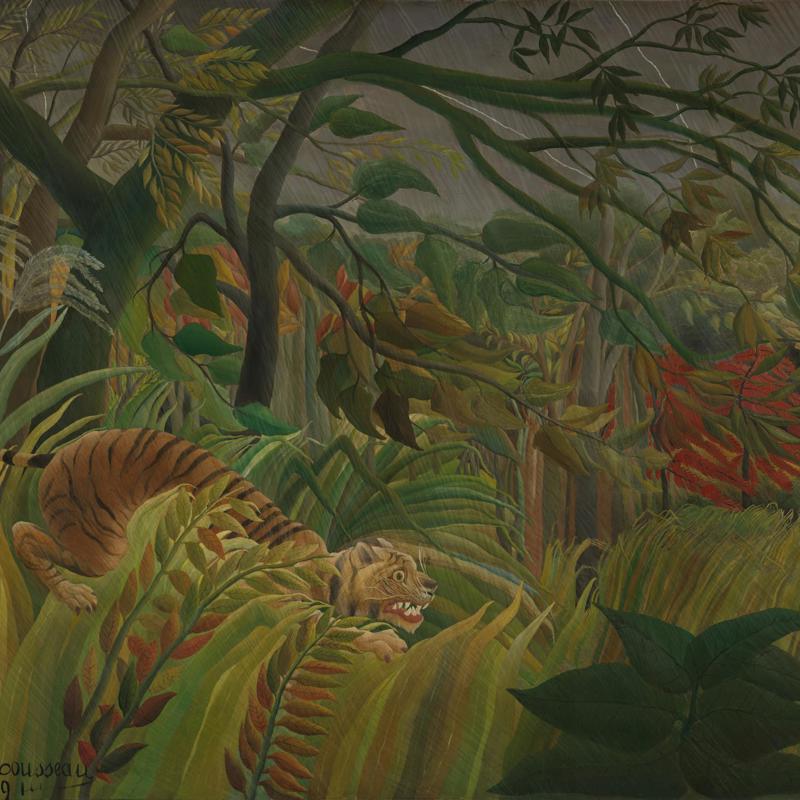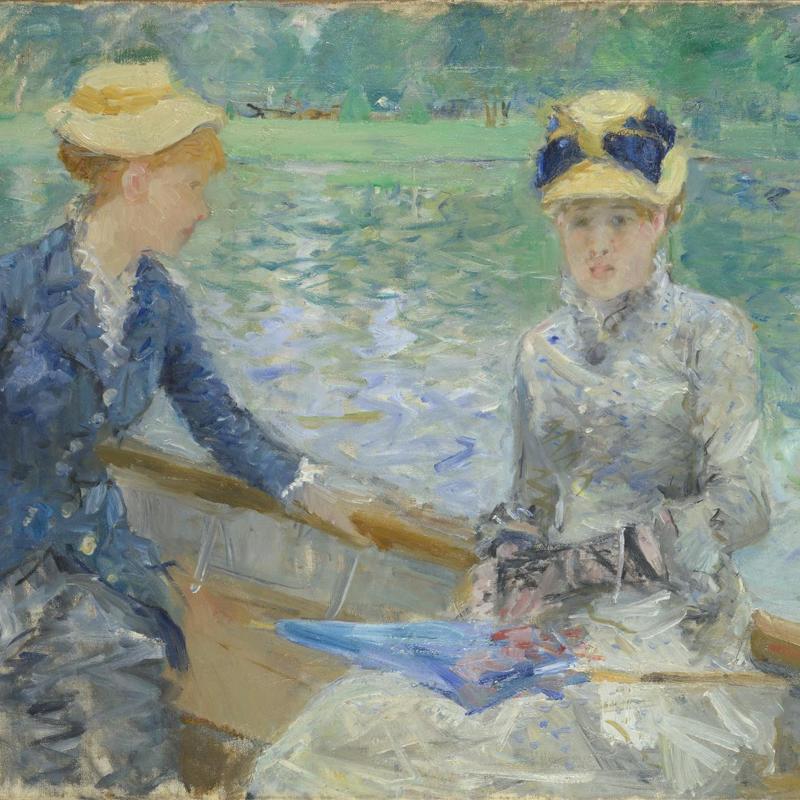A young man convulses in pain as a small lizard bites his middle finger.
Michelangelo Merisi da Caravaggio’s ‘Boy bitten by a Lizard’ depicts a distinct moment – the very moment at which the young man reacts to this surprise attack. The artist Giovanni Baglione remarked in 1642 that we can ‘almost hear the boy scream’. Until the 20th century, scholars were more interested in the style of this painting than its meaning. Its meaning is ultimately unknown, and Caravaggio may never have intended to convey one. Nonetheless, different interpretations speak to the intrigue that this painting provokes.
The lively discussion around the meaning, or lack thereof, of ‘Boy bitten by a Lizard’ may be accounted for by the fact that the painting is part still life, part figure painting. In the early Baroque period, still lifes did not have the same prestige as figure painting, but in this work, Caravaggio has combined the two genres. The painting possesses all the hallmarks of a still life – glossy fruits, sweet-smelling flowers, small creatures. But here, the lizard is not merely a static component – it is doing something. And by making the lizard do something, Caravaggio introduces a narrative.
Perhaps there is something about the narrative element of this painting that makes us feel like it ought to have a meaning. After all, narrative is all about cause and effect, before and after. If the painting does have a meaning, or some kind of message the artist wishes to convey, it is through narrative that we, as viewers, look to interpret it.
The painting as an expression of emotion
For some art historians, the painting was not intended to have a specific meaning or message. For them, it is a study of extreme emotional expression, while others have suggested that it is a sensory exploration of touch. Indeed, the chiaroscuro – extreme contrast between light and dark – that Caravaggio is famous for accentuates the boy’s surprise and pain as the lizard bites his finger. Dark shadows pool in the young man’s knotted brow, showing his face muscles contorting in pain, while shadows line the tendons in his right hand as they seize up in shock.
The painting as an allegory
Discussion of the painting has often focused on the symbolism of the lizard. Some art historians read the painting as an allegory: the lizard’s bite interpreted as a punishment for some unknown transgression.
The lizard’s closeness to a serpent has led some art historians to read the painting as a Biblical allegory, reminiscent of the story of Adam and Eve in the Book of Genesis – a story all about the consequences of transgression. If the lizard is punishing the boy we, as viewers, wonder what the young man was doing before this small and unassuming lizard decided to sink its teeth into his flesh.
The painting as a vanitas
'Boy bitten by a Lizard' has also been interpreted as a 'vanitas', a still life painting intended to warn the viewer to be watchful of traits like pride or hubris. Vanitas paintings depict worldly pleasures such as fruit and flowers – sometimes with early signs of decay, sometimes alongside a human skull – to convey the transience of life. These paintings are designed to encourage humility in the viewer by reminding them of their own mortality. Indeed, where there is youth, there is eventual age, and where there is life, there is certain death.
In ‘Boy bitten by a Lizard’, the boy is not viewing a vanitas painting but participating in one. There is a slight streak of incredulity in the boy’s face, as if he is being taught a lesson that has dampened his youthful pride.
The painting as an insult or a lesson?
The finger the lizard bites has also been commented on – the digitus impudicus. While the middle finger is a gesture people have been using to insult one another since ancient Greece, here it is not the boy doing the insulting, but the lizard insulting the boy. As viewers we might ask, is the lizard’s bite an insult or a lesson? Or might it be that the young man interprets the bite as an insult, but it is, in fact, a lesson?
The painting as a temptation
In the act of recoiling, the youth’s shoulder has been exposed. In the 1970s, art historians began remarking on the distinct homoeroticism in the way Caravaggio has depicted the boy. Even in this moment of pain, he has full, parted lips, rosy cheeks, and a rose tucked behind his ear – his bare, muscular shoulder conveniently and prominently on show. This is a moment that ‘shouldn’t’ be erotic, but the sensuality in the young man’s reaction cannot be denied.
While the young man in this painting has been caught unaware, there are other young men that Caravaggio painted who are very much aware of, and in possession of, their sensuality. ‘Boy bitten by a Lizard’ was painted in the 1590s, in Caravaggio’s early career.
During this decade, he painted numerous sensual young men. In ‘Boy with a Basket of Fruit’ (about 1595, Galleria Borghese) the young man offers the viewer a bounty of fruit. His expression, however, makes us wonder whether this is the only thing on offer. Indeed, this young man is as appealing as the basket of fruit he carries. Even Caravaggio’s self portrait, ‘Young Sick Bacchus’ (between 1593 and 1594, Galleria Borghese) has a strange, coy, erotic charge to it, as if Bacchus were soliciting the viewer. Even in this moment of sickness, he curls his bicep and looks back at the viewer from behind a muscular shoulder.
The painting as a self portrait
Biographical records tell us that in his early career, Caravaggio often painted portraits of himself using a mirror. It has been suggested that ‘Boy bitten by a Lizard’ may be a self portrait. The young man’s eyes appear to be fixed on something. Might this be his own reflection? In which case, might he be witnessing his own reaction, just as we as viewers witness his reaction? Either way, there is a look of revelation on his face, as if, whatever the lizard bite may mean, the young man is learning its meaning.
This is a moment of vulnerability that Caravaggio has allowed us, the viewer, to be privy to. The lizard is a small and seemingly harmless creature, but it delivers an almighty shock that leaves the boy open and exposed – and open to interpretation.
While these different interpretations speak to Caravaggio’s ability to captivate the viewer, they also speak to our own desire to look for meaning. Art historians have been somewhat wary of this impulse. The 20th-century art historian, Ernst Gombrich, for instance, states that ‘the discoveries of psychoanalysis have certainly contributed to the habit of finding so many “levels of meaning” in any given work’, but that this approach tends to be confused and conflated with the reasons why the artwork was created in the first place.
Whether there was an intentional message behind ‘Boy bitten by a Lizard’ or not, the narrative element of the painting inevitably makes us dwell on the unknown series of events that triggered the lizard’s bite. Whether this effect – this intrigue – was intentional or not, this is a painting full of ambiguous and transgressive potential. Such ambiguity and intrigue may, or may not, have been the point.








